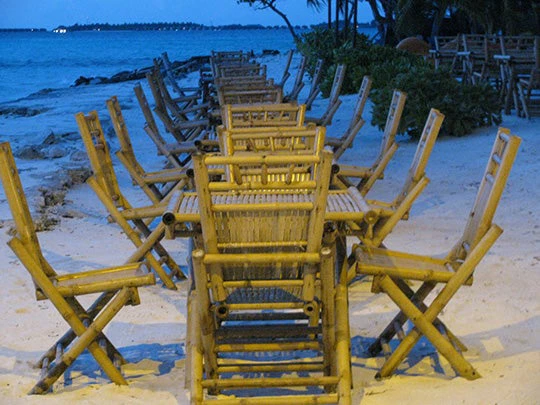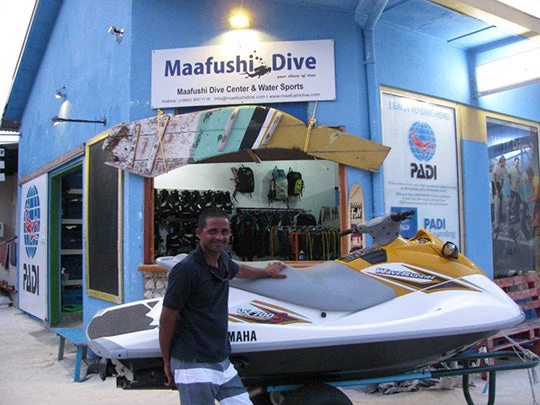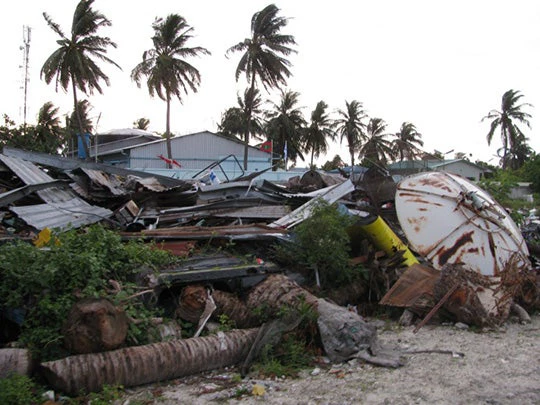The success story of Maafushi, an island in the Kaafu Atoll in the Maldives, dates back to 2009 when the government liberalized its policy on local tourism. A visionary entrepreneur, Ahmed Naseer, lost no time in starting a four roomed guest house in 2010, to kick start the concept of local tourism in his home island Maafushi. And the rest is history!
Maafushi’s expansion from one guest house in 2010 to thirty guest houses to date is a remarkable success story which I was privileged to witness firsthand last week.
An island with 2000 locals had welcomed 600 tourists last year. They were coming in search of an affordable, simple holiday, just for the sun and sea experience, living amongst the islanders while experiencing theiruniqueculture and lifestyle. Maafushi’s model of attracting local tourists has provided an alternative to the high end tourism that Maldives is known world over for.
Asim Mohamed, better known as ‘Simbe’ of Maafushi Dive
I was curious to know what factors contributed to this amazing story of growth of local tourism on one solitary island in the archipelago.
“Proximity to Male, ease of transport, a well-functioning sewage system and a water treatment plant definitely helped us” said Simbe, the beaming thirty two year old owner of Maafushi Dive.
What he didn’t say was that the unique entreprenurial spirit of the islanders coupled with their warm and friendly nature with which they welcomed the guests, making them feel at home and comfortable at all times definitely added to their success.
A Norwegian diving instructor I met in the island said “people of Maafushi are very different in nature to some of the other islanders,” and confirmed that the success of Maafushi could also be largely attributed to this unique characteristic of its people. Having spoken to many different groups in the island, I would definitely think she knew what she was talking about.
What was most intriguing for me was how the islanders had demarcated a special area for the guests to enjoy the sun and sea, without encroaching into each others’ lives. The palm leafed fence beautifully separated the privacy of both the guests and the islanders who believed in a ‘live and let live’ philosophy to help with the growing local tourism in the island.
The success of this island is not limited to development of its guest houses, but the growth of complementary services which makes the model sustainable, inclusive and beneficial to a larger group of islanders. Some of these services include transport, laundry service, internet and cable TV services, restaurents, handicrafts, engineering and maintainence services, construction work, carpentary, garbage collection, motorbike repairs, traditional music and dance, fishing, diving and water sports and still growing…
Unattended waste management
As any form of development is bound to have challenges, Maafushi is conscious of theirs. Sea erosion is a primary concern which will badly affect the booming industry if timely intervention is not forthcoming. The other pressing issue is the escalating consumption of electricity and beyond affordable rates that seem unsustainable with the increasing business needs. Waste management is another growing problem that hasn’t found a solution yet. The entrepreneurs are hopeful that the government will provide them with solutions to these three major threats that will determine the growth and sustainability of this remarkable development success story that has helped Maafushi in wealth creation and shared prosperity.
Photos by Sandya Salgado/World Bank
See the rest of the photos here





Join the Conversation